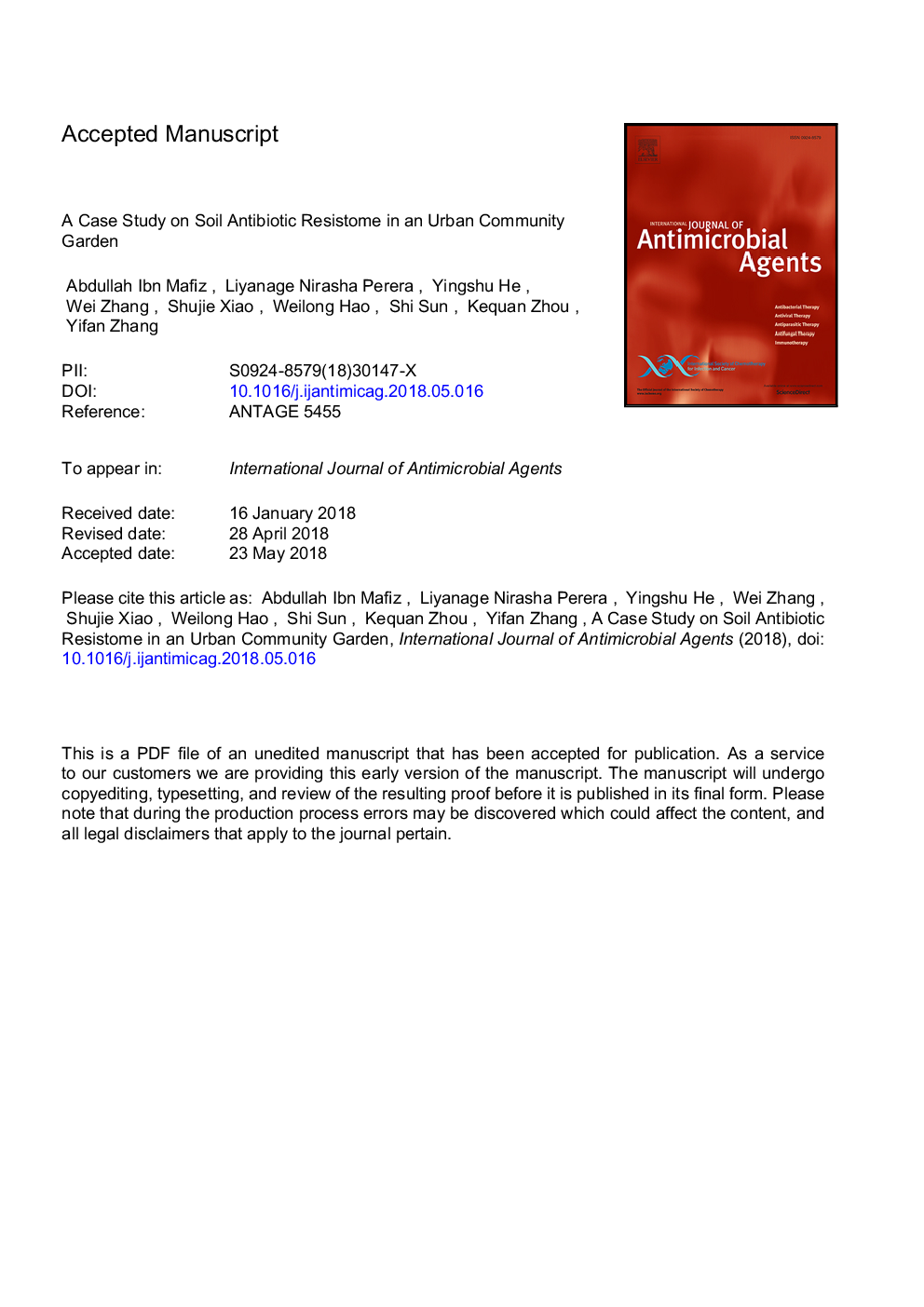| کد مقاله | کد نشریه | سال انتشار | مقاله انگلیسی | نسخه تمام متن |
|---|---|---|---|---|
| 8738435 | 1591726 | 2018 | 33 صفحه PDF | دانلود رایگان |
عنوان انگلیسی مقاله ISI
Case study on the soil antibiotic resistome in an urban community garden
ترجمه فارسی عنوان
مطالعه موردی مقاومت آنتی بیوتیکی خاک در باغ جامعه شهری
دانلود مقاله + سفارش ترجمه
دانلود مقاله ISI انگلیسی
رایگان برای ایرانیان
کلمات کلیدی
موضوعات مرتبط
علوم زیستی و بیوفناوری
ایمنی شناسی و میکروب شناسی
میکروبیولوژی و بیوتکنولوژی کاربردی
چکیده انگلیسی
Urban agricultural soils can be an important reservoir of antibiotic resistance, and have great food safety and public health indications. This study investigated antibiotic-resistant bacteria and antibiotic resistance genes in urban agricultural soils using phenotypic and metagenomic tools. In total, 207 soil bacteria were recovered from 41 soil samples collected from an urban agricultural garden in Detroit, MI, USA. The most prevalent antibiotic resistance phenotype demonstrated by Gram-negative bacteria was resistance to ampicillin (94.2%), followed by chloramphenicol (80.0%), cefoxitin (79.5%), gentamicin (78.4%) and ceftriaxone (71.1%). All Gram-positive bacteria were resistant to gentamicin, kanamycin and penicillin. Genes encoding resistance to quinolones, β-lactams and tetracyclines were the most prevalent and abundant in the soil. qepA and tetA, both encoding efflux pumps, predominated in the quinolone and tetracycline resistance genes tested, respectively. Positive correlation (P<0.05) was identified among groups of antibiotic resistance genes, and between antibiotic resistance genes and metal resistance genes. The data demonstrated a diverse population of antibiotic resistance in urban agricultural soils. Phenotypic determination together with soil metagenomics proved to be a valuable tool to study the nature and extent of antibiotic resistance in the environment.
ناشر
Database: Elsevier - ScienceDirect (ساینس دایرکت)
Journal: International Journal of Antimicrobial Agents - Volume 52, Issue 2, August 2018, Pages 241-250
Journal: International Journal of Antimicrobial Agents - Volume 52, Issue 2, August 2018, Pages 241-250
نویسندگان
Abdullah Ibn Mafiz, Liyanage Nirasha Perera, Yingshu He, Wei Zhang, Shujie Xiao, Weilong Hao, Shi Sun, Kequan Zhou, Yifan Zhang,
